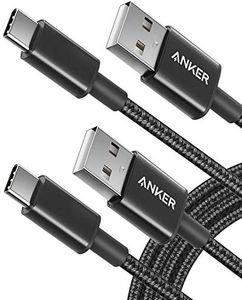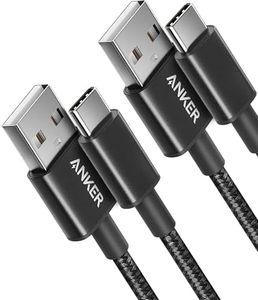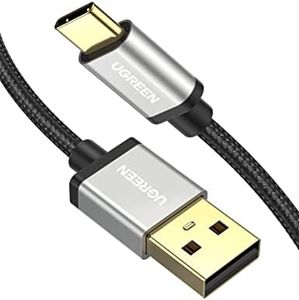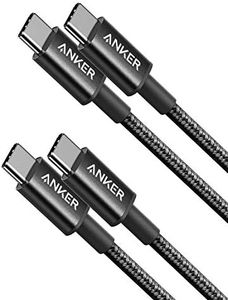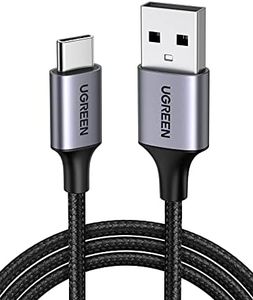We Use CookiesWe use cookies to enhance the security, performance,
functionality and for analytical and promotional activities. By continuing to browse this site you
are agreeing to our privacy policy
10 Best Charging Cables
From leading brands and best sellers available on the web.Buying Guide for the Best Charging Cables
When choosing a charging cable, it’s important to think about what devices you’ll be charging, the environment where you’ll use the cable (like home, car, or office), and how quickly and reliably you want your devices to charge. Also, consider if you need extra features like durability or compatibility with multiple devices, as a good cable can make charging safer, faster, and more convenient.Connector TypeThe connector type refers to the end of the cable that plugs into your device. Common connector types include USB-A, USB-C, Lightning, and Micro-USB. Choosing the right connector is crucial because it must fit your device’s port. USB-C is increasingly popular and supports faster charging and data transfer, while Lightning is exclusive to Apple devices, and Micro-USB is found on some older gadgets. To pick the right one, check what kind of charging port your device has and ensure the cable matches it. Some cables have multiple heads for versatility.
Cable LengthCable length determines how far you can stretch from the charging source. Short cables (under 1 meter) are best for portability and minimizing clutter, medium lengths (1-2 meters) are good for everyday use, while long cables (over 2 meters) offer more flexibility if outlets are far away. The right length depends on where you plan to use the cable; shorter for desks or power banks, longer for bedrooms or harder-to-reach outlets.
Charging Speed (Amperage/Wattage)Charging speed is often measured in terms of amperage (A) or wattage (W), which shows how much power the cable can handle. Higher-rated cables can charge devices faster, but only if your device and charger also support faster charging. Typical segments are standard charging (around 5W/1A), fast charging (10-18W/2A+), and high-speed charging (above 18W/3A). To choose the right one, check if your device supports fast or high-speed charging and pick a cable that matches or exceeds that support.
Durability & MaterialDurability is about how well the cable stands up to everyday use. Materials like braided nylon are tougher and more resistant to tangling or breaking, while basic plastic cables can be cheaper but may wear out quicker. If you often carry cables in bags, use them on the go, or plug/unplug them frequently, picking a durable, reinforced cable is a good idea. For home use where the cable stays in one place, durability is less critical.
Data Transfer CapabilityBesides charging, some cables also allow you to transfer data between devices and computers. Basic charging-only cables won’t let you sync data, while higher-quality cables offer high-speed data transfer. These are often marked as ‘data cables’ or specify USB standards like USB 2.0, USB 3.0, etc. If you just need power, data transfer isn’t necessary, but if you sometimes move files or photos, look for cables with this feature.
Certifications & Safety FeaturesCertifications like MFi (for Apple), USB-IF, or mentions of over-current and over-voltage protection mean the cable meets certain safety standards and is less likely to damage your device. These features are especially important if you plan to charge valuable or sensitive devices. Checking for certifications is a smart step if reliability and safety are top priorities for you.
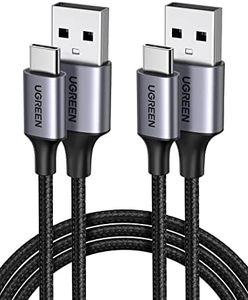

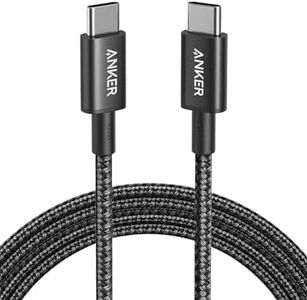
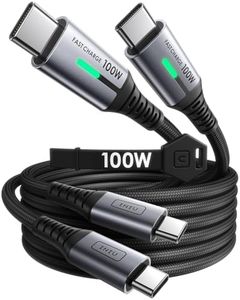
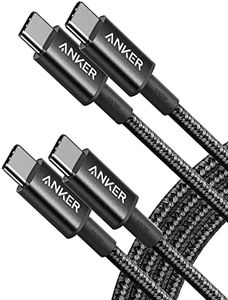
![iPhone Charger Cable 90 Degree 2M 3Pack, [Apple MFi Certified] USB A to Lightning Cable Braided iPhone Cable Right Angle Fast Charging Cord for iPhone 14 13 12 11 Pro Max XR XS Max X 10 8 7 6 SE, iPad](https://images-proxy.bestreviews.guide/XnHu-N7TBvuVUTgL3M3is_8WXCc=/0x300/https://m.media-amazon.com/images/I/51HsTCz9s-L._AC_CX679_.jpg)
![sweguard USB Type C Charger Cable [2M,2-Pack] iPhone 16 Charger Cable Nylon Braided for iPhone 15 16 Pro Max Plus, Samsung Galaxy S25 S24 S23 S22 S21 S20 S10 S9 S8 Note 20 10 Flip Pixel LG Moto Sony](https://images-proxy.bestreviews.guide/3Xp5ipNgnBWTwVmFwPZ3zk4-vT0=/0x300/https://m.media-amazon.com/images/I/41o+lNjmA9L._AC_CX679_.jpg)
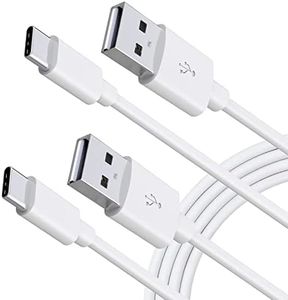
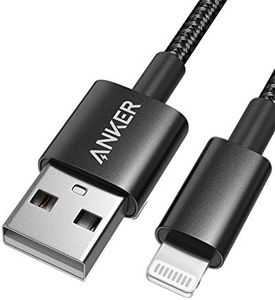
![INIU USB C Cable, [3 Packs] Type C to USB A Fast Charger [0.5+2+2m] Cables, Nylon Braided Cord USB-C Fast Charging 3.1A, USBC Cable Phone Charger for iPhone 16 15 Pro Max Samsung Galaxy S22 S21 S20](https://images-proxy.bestreviews.guide/M4N_zU8x9zm_ZkawfN7hLayOfw4=/0x300/https://m.media-amazon.com/images/I/41rC8C7AqNL._AC_CX679_.jpg)
